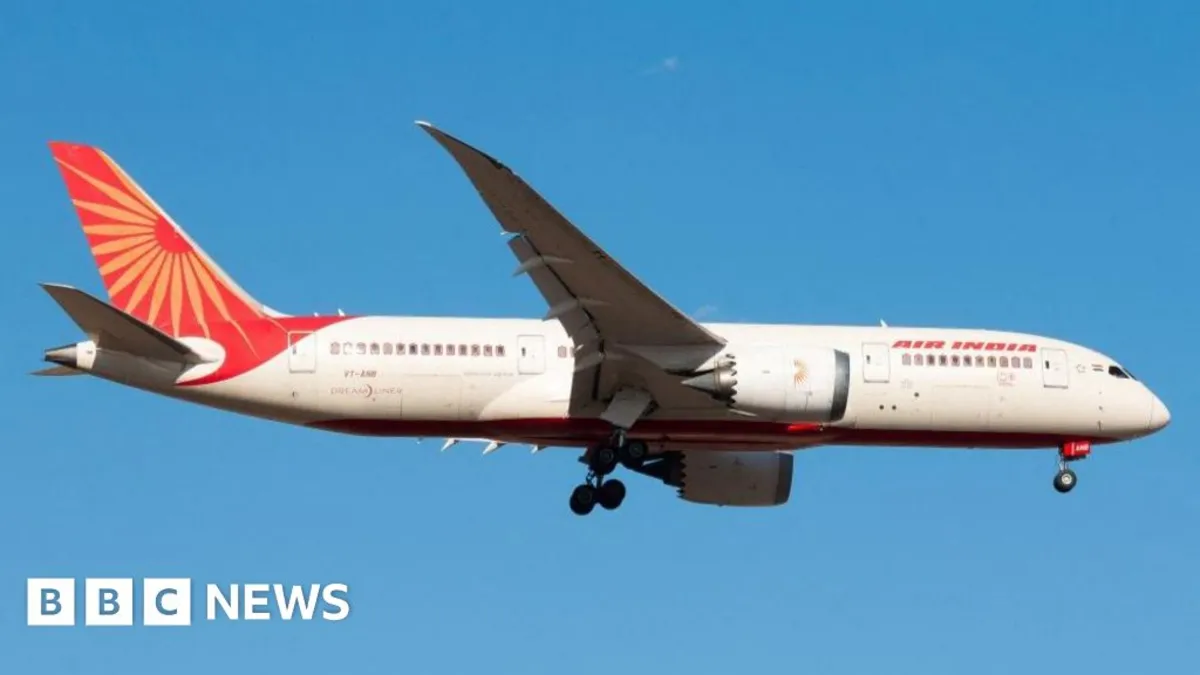
In a chilling turn of events, investigators have made unsettling discoveries regarding the Air India Flight 171 crash that tragically claimed the lives of 260 individuals in June. The preliminary investigation reveals that just seconds after takeoff, the fuel-control switches of the 12-year-old Boeing 787 Dreamliner unexpectedly moved to the cut-off position. This critical action deprived the engines of fuel, leading to a total loss of power.
The cockpit voice recordings from the flight have added layers to this ongoing mystery. In a tense moment captured in the recording, one pilot questions the other about the cut-off switch, to which the response was, “I didn’t do it.” Unfortunately, the recording does not clarify which pilot was speaking. At the time of the incident, the co-pilot was at the controls while the captain was monitoring from a secondary position. Following the switch to cut-off, the pilots managed to return the fuel switches to their normal inflight position, initiating an automatic engine relight.
Tragically, the aircraft was airborne for less than 40 seconds before crashing into a busy neighborhood in Ahmedabad, India, marking one of the country’s most perplexing aviation disasters. Initial reports indicate that the Air India flight ascended to 625 feet under clear weather conditions before losing its location data just 50 seconds after takeoff, according to Flightradar24.
The investigation, spearheaded by Indian authorities with contributions from experts at Boeing, GE, Air India, and various regulatory bodies, has raised significant questions. Notably, the lever-lock fuel switches are designed to prevent unintended activation; they require a two-step process to unlock and flip. An anonymous air accident investigator emphasized that the nature of the switch makes accidental deployment highly unlikely. This peculiarity raises concerns about why a pilot would intentionally switch off the fuel supply.
Shawn Pruchnicki, an aviation expert from Ohio State University, expressed skepticism about the possibility of confusion leading to such an action. He indicated that pilots typically report any anomalies, and in this case, there was no indication that the pilots experienced any unusual situations. This potential error, he noted, is not common to happen without a substantial underlying issue.
Peter Goelz, a former managing director of the US's NTSB, echoed the sentiment of concern surrounding the cockpit audio. He stated that the finding is alarming, as it suggests a pilot shut off the fuel switch mere seconds after takeoff. He believes there is likely more information hidden within the cockpit voice recorder that has yet to be analyzed. The critical question remains: who made the decision to shut the valves, and why?
The rapid switching of both fuel switches within mere seconds poses serious implications for the investigation. While the cockpit voice recorder captures vital audio from pilot microphones, radio communications, and ambient sounds, the challenge remains in identifying which pilot manipulated the switches. Investigators stress the necessity for clear voice identification and a comprehensive transcript of cockpit communications from the moment the aircraft departed the gate until the crash.
Additionally, experts advocate for the implementation of cockpit video recorders, a recommendation previously made by the NTSB. Such technology could provide visual evidence of pilot actions and clarify who was responsible for manipulating the cut-off switches during critical moments.
Prior to boarding Flight 171, both pilots had successfully passed breathalyzer tests and were deemed fit to fly. The crew, based in Mumbai, had arrived in Ahmedabad the previous day and had sufficient rest. However, investigators are now scrutinizing a notable point raised in the report: a 2018 US Federal Aviation Administration bulletin highlighted potential issues with fuel control switches in certain Boeing models, including the 787-8 utilized by Air India. The bulletin indicated that some switches might have been installed without the locking feature engaged, raising safety concerns regarding the functionality of these switches.
Mr. Pruchnicki questioned whether the fuel control switches could have been triggered electronically by the aircraft's electronic control unit, suggesting that pilot movement may not have been necessary. If electronic malfunction is a possibility, it would represent a significant safety concern. Conversely, some experts maintain skepticism about the FAA bulletin, emphasizing that they have not encountered widespread complaints from pilots regarding the fuel switches.
As investigators continue their work, the report affirms that fuel samples from the refueling tanks were satisfactory, ruling out fuel contamination as a cause for the dual engine failure. Additionally, the deployment of the Ram Air Turbine (RAT) during the incident indicates a severe systems failure, with the landing gear found in a down position. The RAT, designed to provide emergency backup power during dual engine failure, further corroborates the conclusion that both engines experienced a catastrophic failure.
A Boeing 787 pilot noted the critical timing involved in landing gear retraction, suggesting that the pilots may have been overwhelmed by the circumstances, focusing solely on the flight path rather than the landing gear. In the chaotic moments following the engine failure, the crew's attempts to recover were thwarted by time constraints. The engines were switched off and then back on in a desperate attempt to regain thrust, but it ultimately proved too late for recovery.
The ongoing investigation into the Air India Flight 171 crash serves as a sobering reminder of the complexities and challenges of aviation safety, emphasizing the importance of thorough analysis, enhanced safety measures, and the need for clear communication in the cockpit.